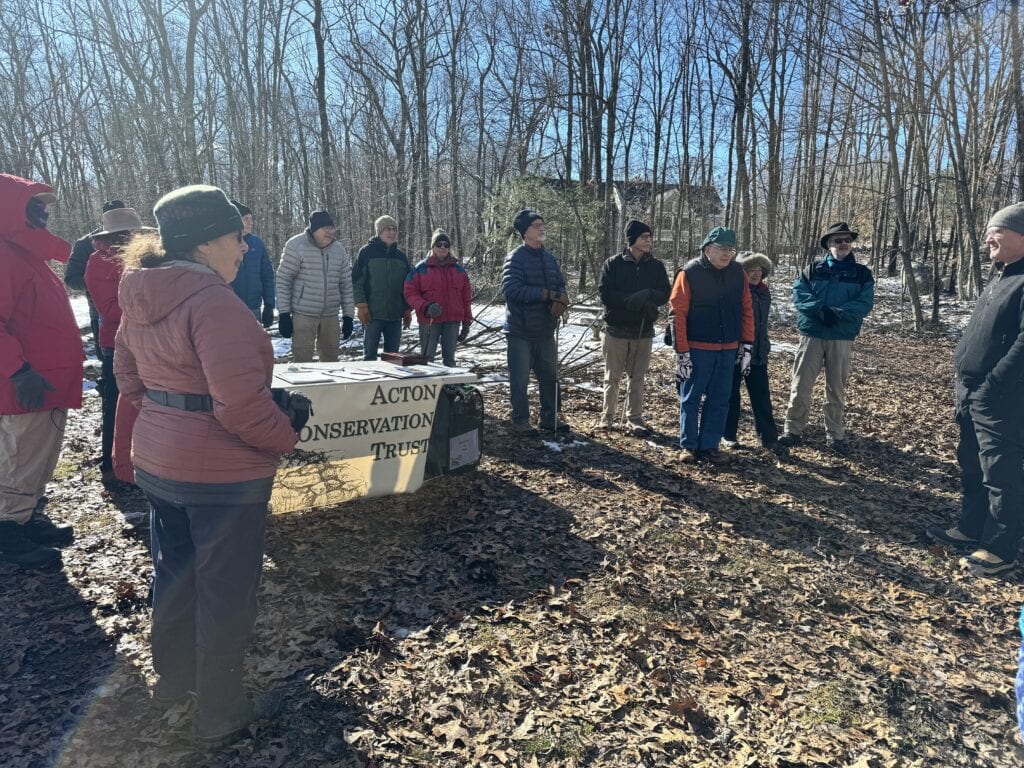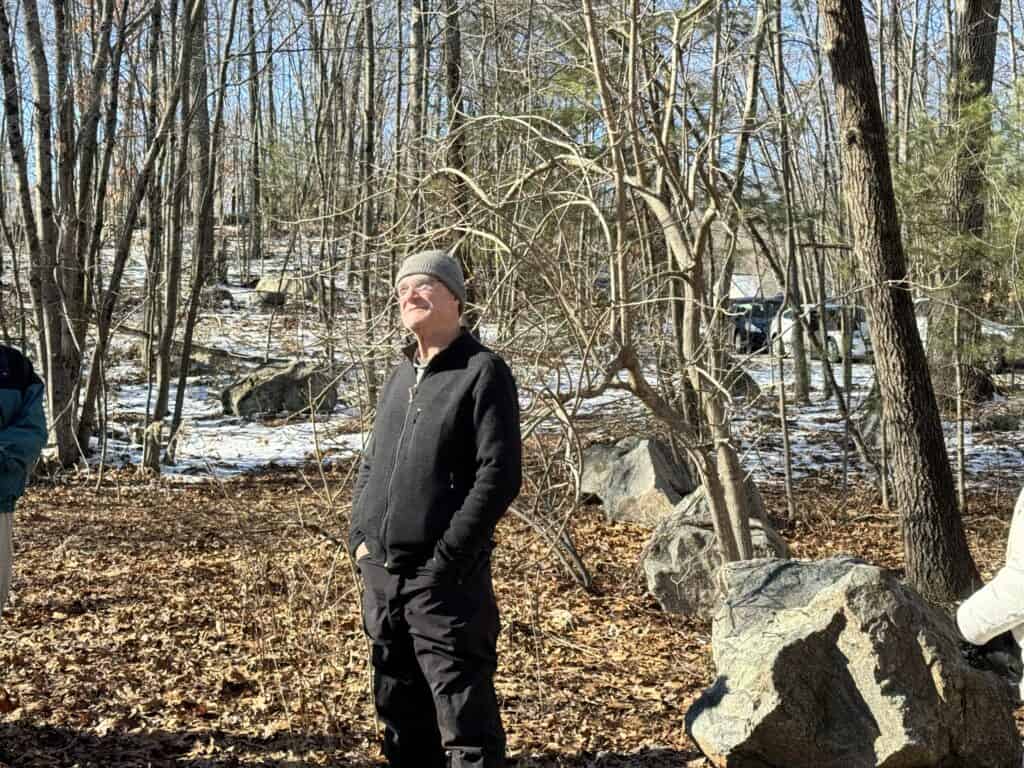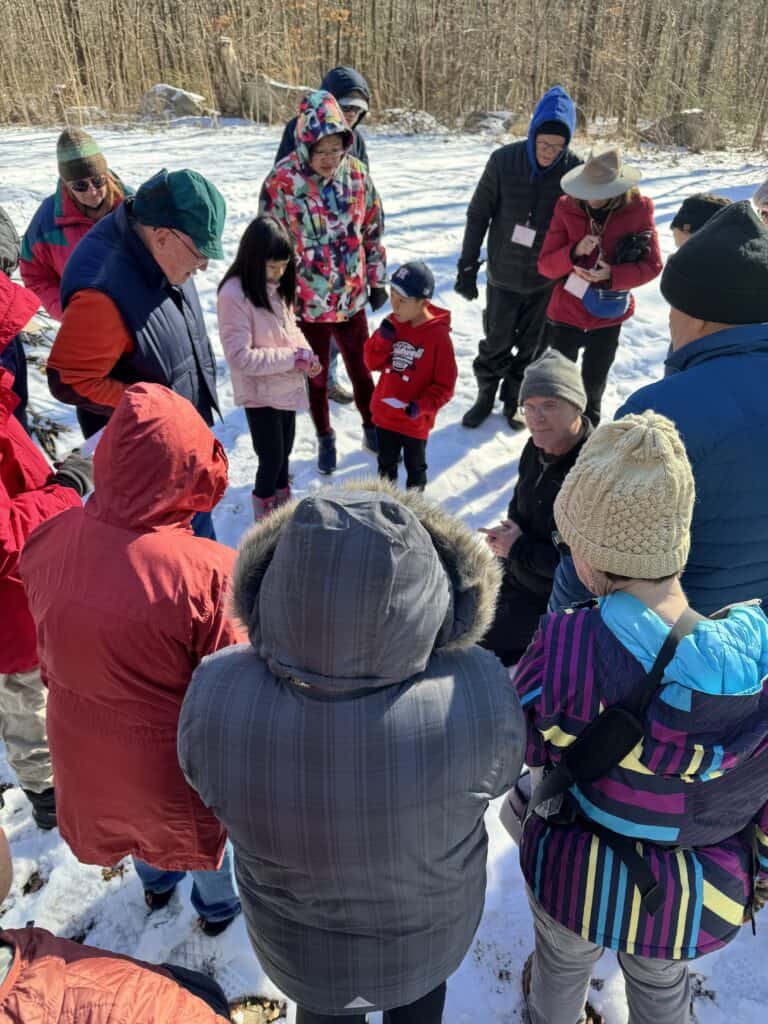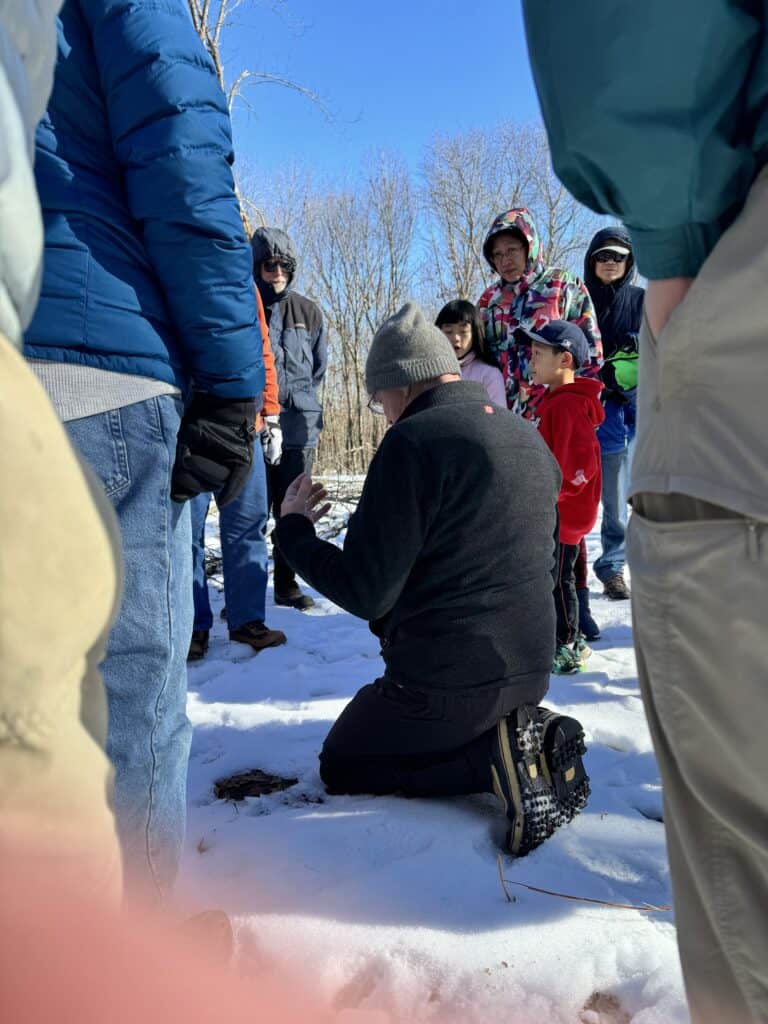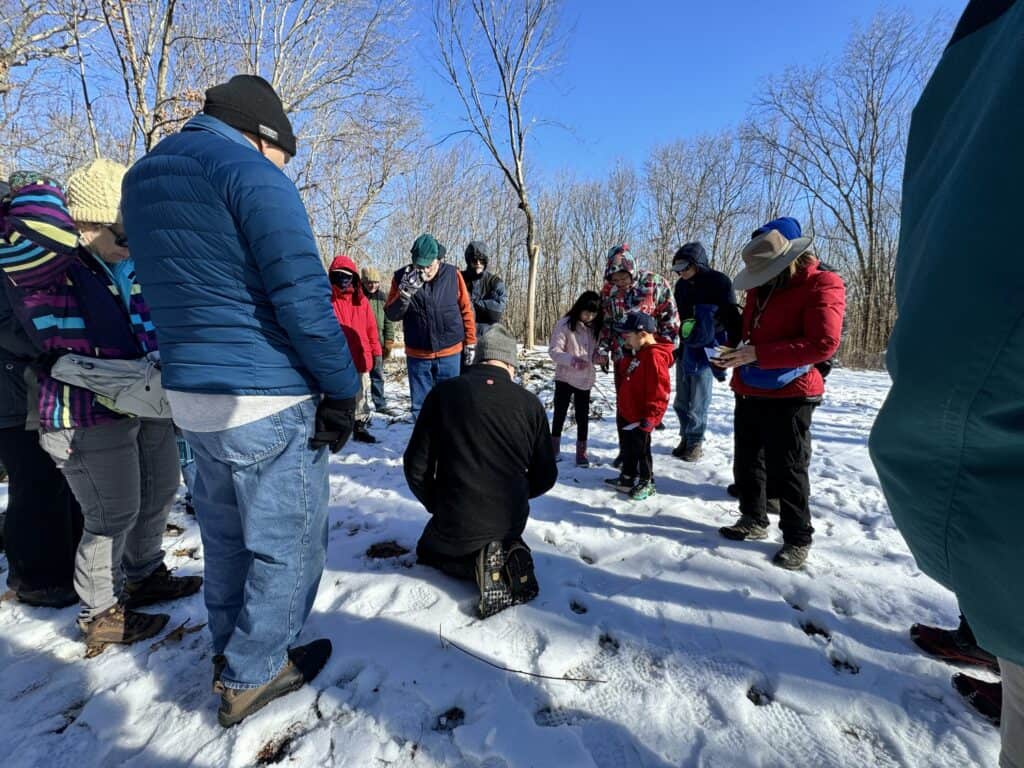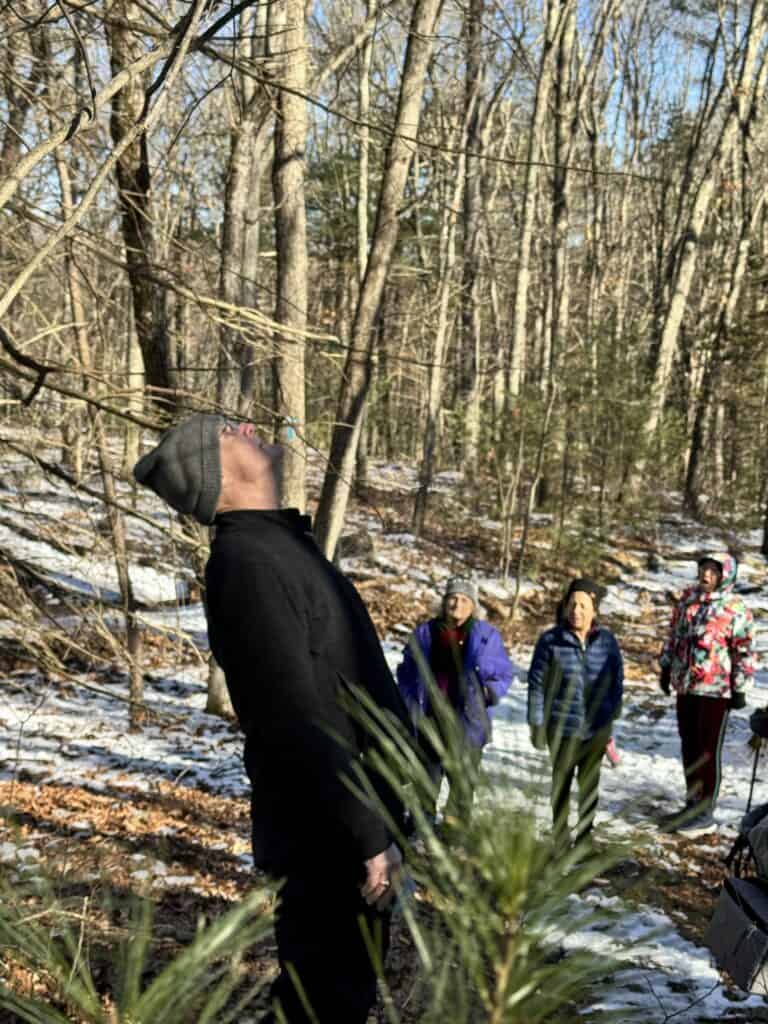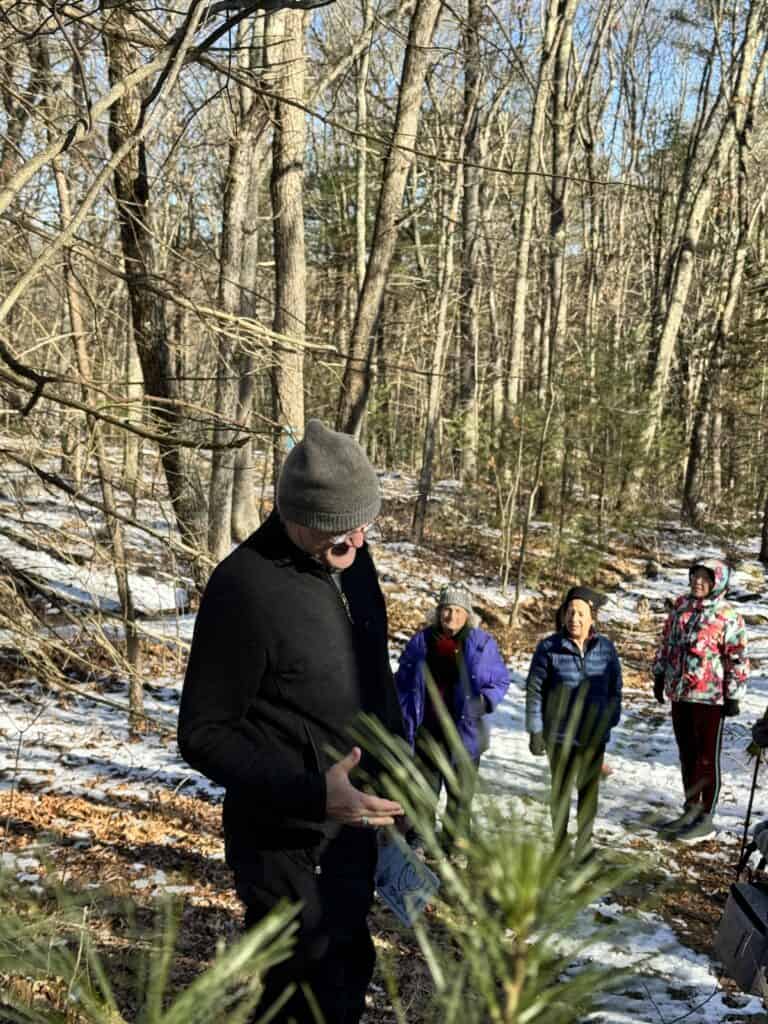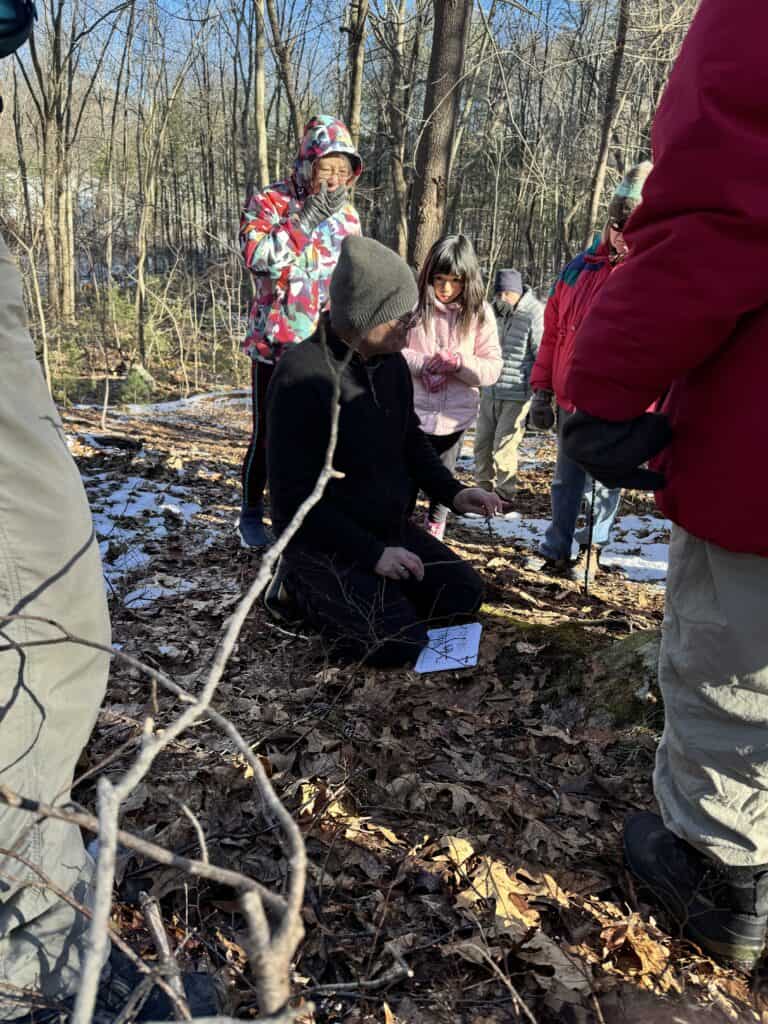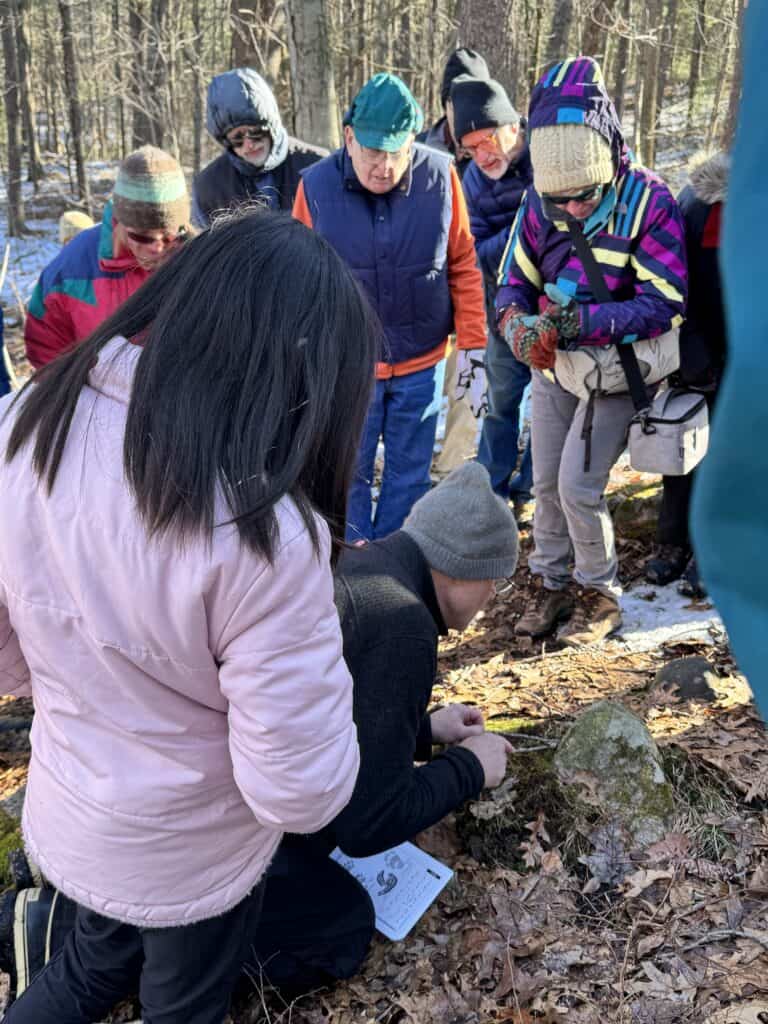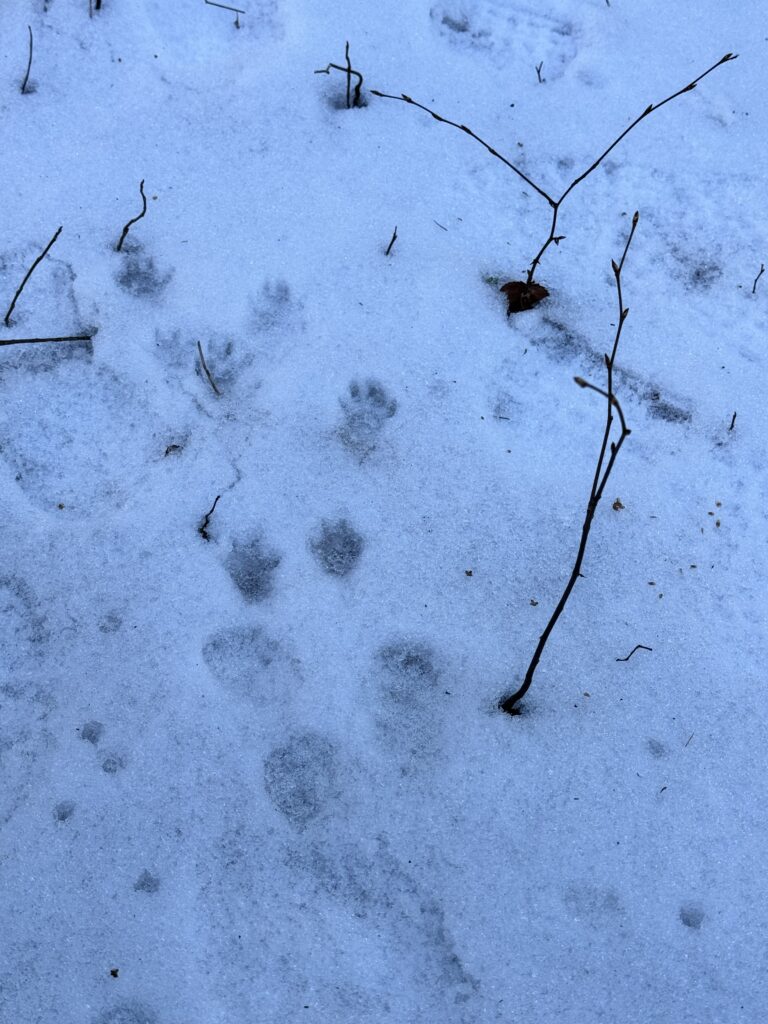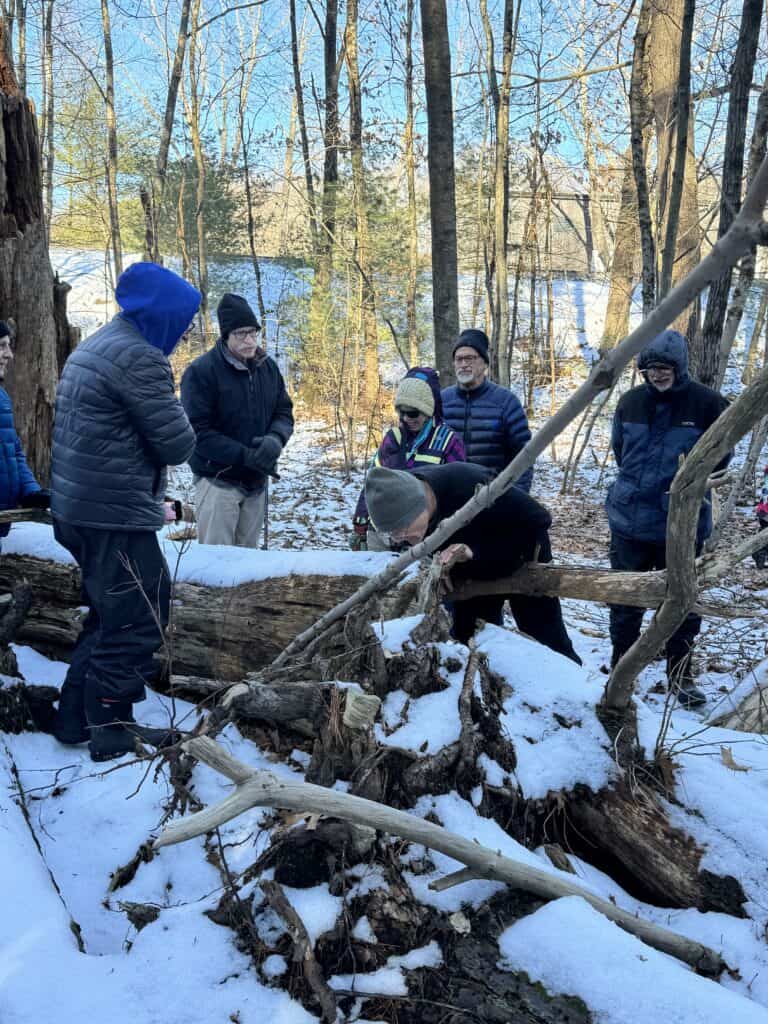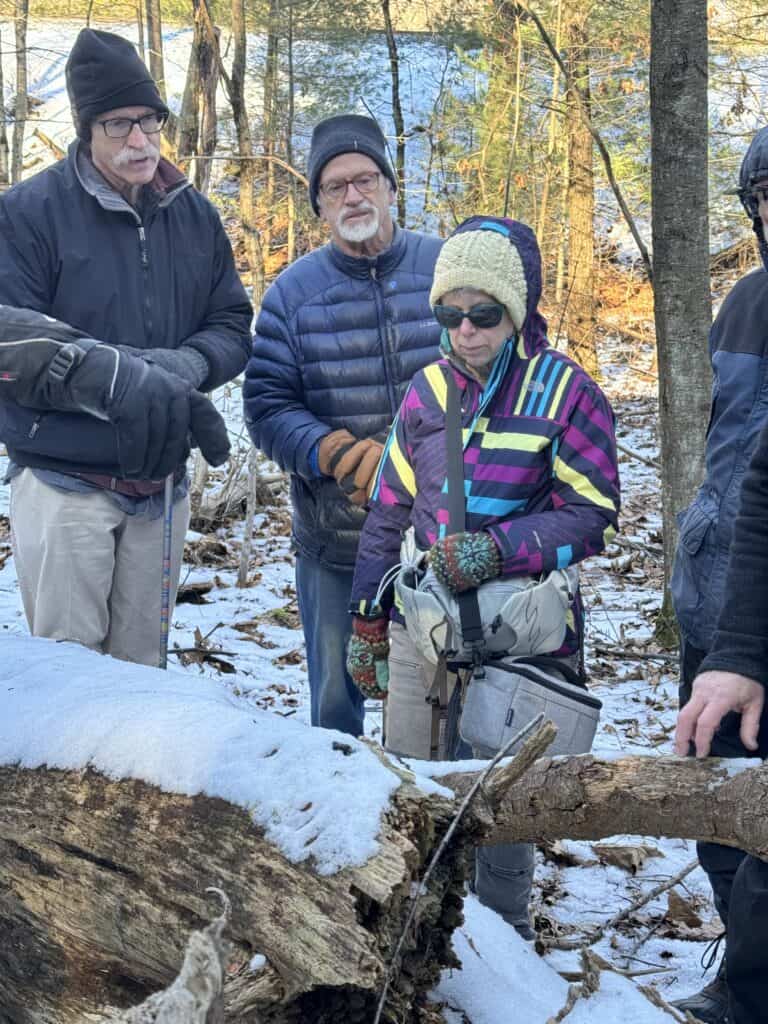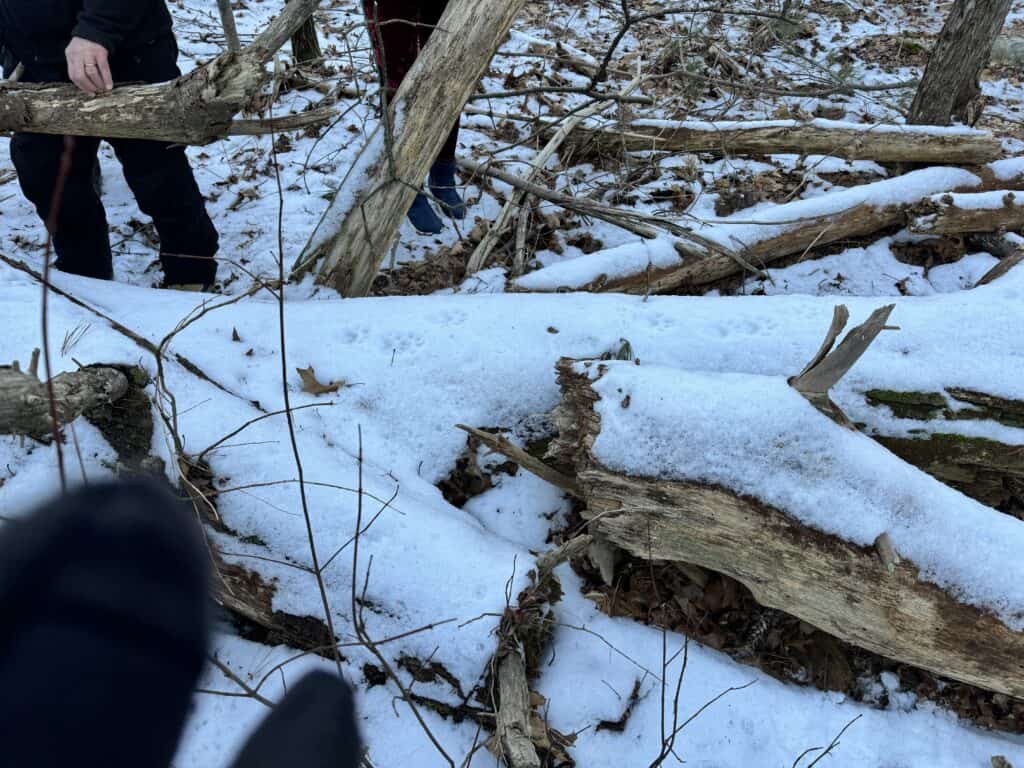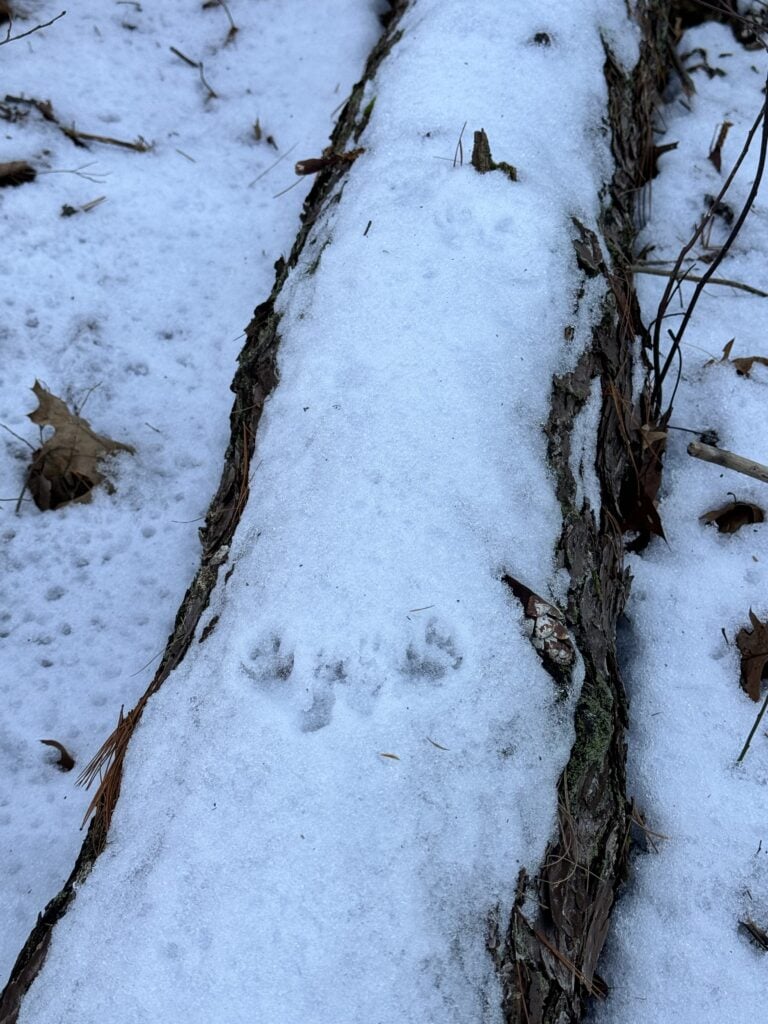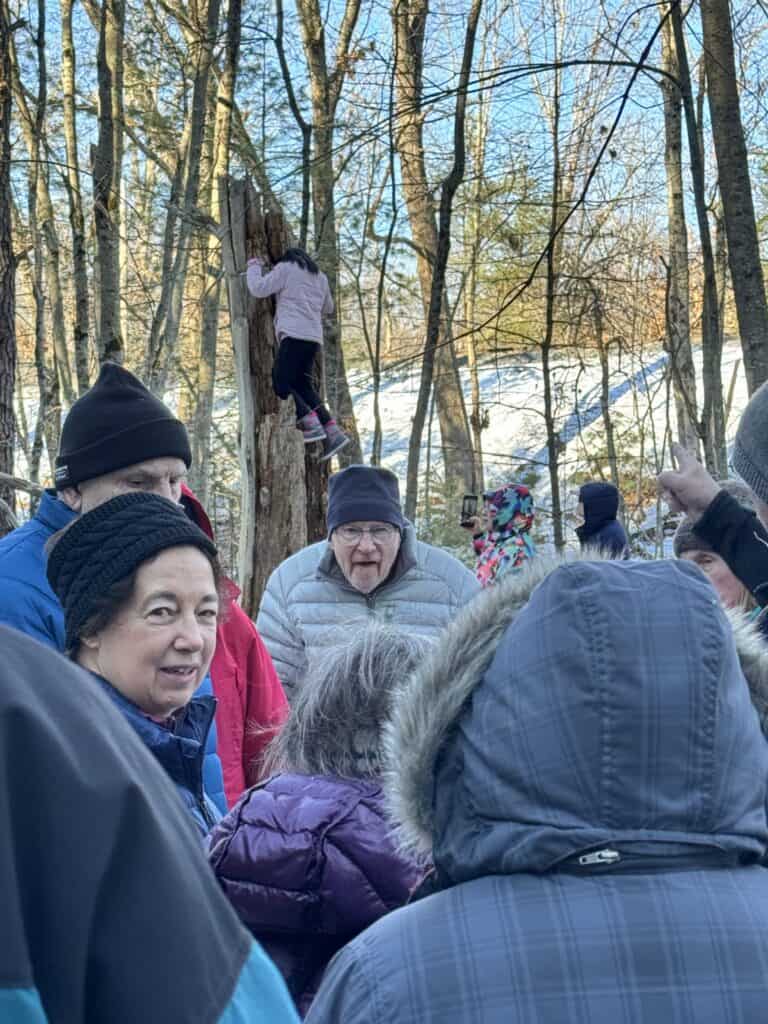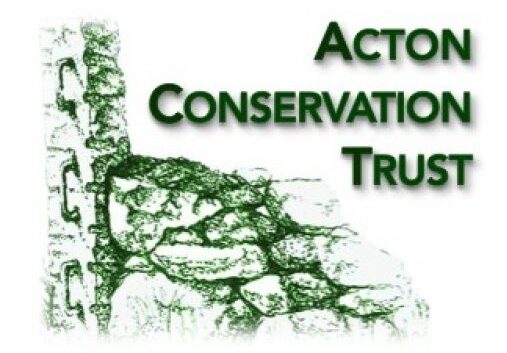The last snowfall was a week ago, but as temps all week were low and skies gray, the woods still held plenty of snow for tracking the animals who make their home there. Tracker Paul Wanta stood in the Senior Park at Pratt’s Brook Conservation Land, surrounded by a circle of people eager to learn to read those tracks. His orientation began by familiarizing us with the surroundings. Most of our conservation lands are places where people and dogs walk, so it’s helpful to learn what dog tracks look like, and remember that when we walk, we also leave a track. Try to walk next to an animal track so you don’t cover the track with your own. Then we headed down the trail towards water, as all animals must drink!
As Paul walks, he is always scanning the trail and the snow along the sides of the trail. Very soon he found some scat left on moss in the middle of the trail. Poking it with a stick he found bone fragments. Thinking about the size of the scat he thought it may have come from a fox, and that the bones were probably from a mouse the fox caught. A little further along the trail we followed some tracks which looked like small human hands, made by a raccoon. Down by a vernal pool we saw deer tracks, and a few areas where the snow was scraped off and pine needles fluffed up. Deer bedding! Next, off trail to a huge fallen tree with a layer of snow still along its length, and otter tracks (and a little scat) running along the tree. We could see where the otter had jumped off the tree and walked along the forest floor.
We had quite a successful time identifying animal tracks, including deer, raccoon, otter, fox and bird tracks. Paul spent a lot of time down on the ground, pointing out track features most of us would otherwise have missed!
